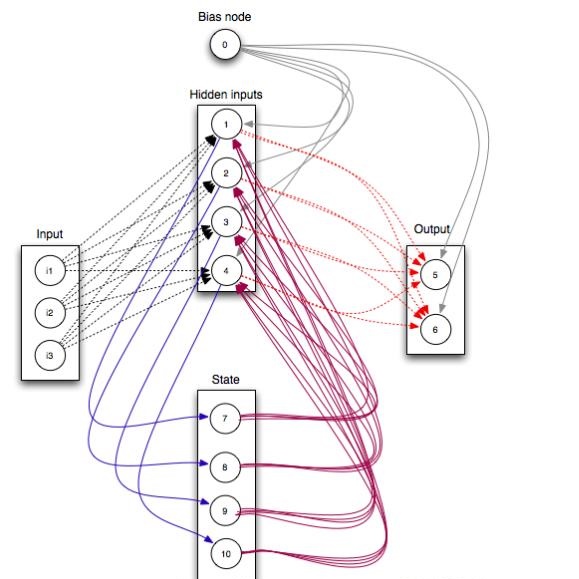Machine learning methods are powerful in distinguishing different phases of matter in an automated way and provide a new perspective on the study of physical phenomena. We train a Restricted Boltzmann Machine (RBM) on data constructed with spin configurations sampled from the Ising Hamiltonian at different values of temperature and external magnetic field using Monte Carlo methods. From the trained machine we obtain the flow of iterative reconstruction of spin state configurations to faithfully reproduce the observables of the physical system. We find that the flow of the trained RBM approaches the spin configurations of the maximal possible specific heat which resemble the near criticality region of the Ising model. In the special case of the vanishing magnetic field the trained RBM converges to the critical point of the Renormalization Group (RG) flow of the lattice model. Our results suggest an alternative explanation of how the machine identifies the physical phase transitions, by recognizing certain properties of the configuration like the maximization of the specific heat, instead of associating directly the recognition procedure with the RG flow and its fixed points. Then from the reconstructed data we deduce the critical exponent associated to the magnetization to find satisfactory agreement with the actual physical value. We assume no prior knowledge about the criticality of the system and its Hamiltonian.
翻译:机器学习方法能够自动地区分不同阶段的物质,并为物理现象的研究提供新的视角。我们用从Ising Hamiltonian以不同温度和外部磁场值使用蒙特卡洛方法从Ising Hamiltonian中抽样的旋转配置制成的数据,对限制的Boltzmann机器(RBM)进行了培训。我们从经过培训的机器中获得了对旋转状态配置的迭接重建流,以忠实复制物理系统的观测结果。我们发现,经过培训的成果管理制的流动接近于与Ising模型的近临界区域相近的最大可能特定热量的旋转配置。在磁场消失的特殊情况下,经过培训的成果管理制汇集到拉蒂斯模型的重新整顿小组(RG)流动的临界点。我们的结果表明,机器如何确定物理阶段的转变,方法是承认特定热量的最大化,而不是直接将识别程序与RG流及其固定点联系起来。然后,我们从重建的数据中推断出与磁力系统相关的临界反应,以便找到与其临界物理价值之间的令人满意的协议。我们假定,我们先前没有关于机器确定其关键物理价值的任何知识。





